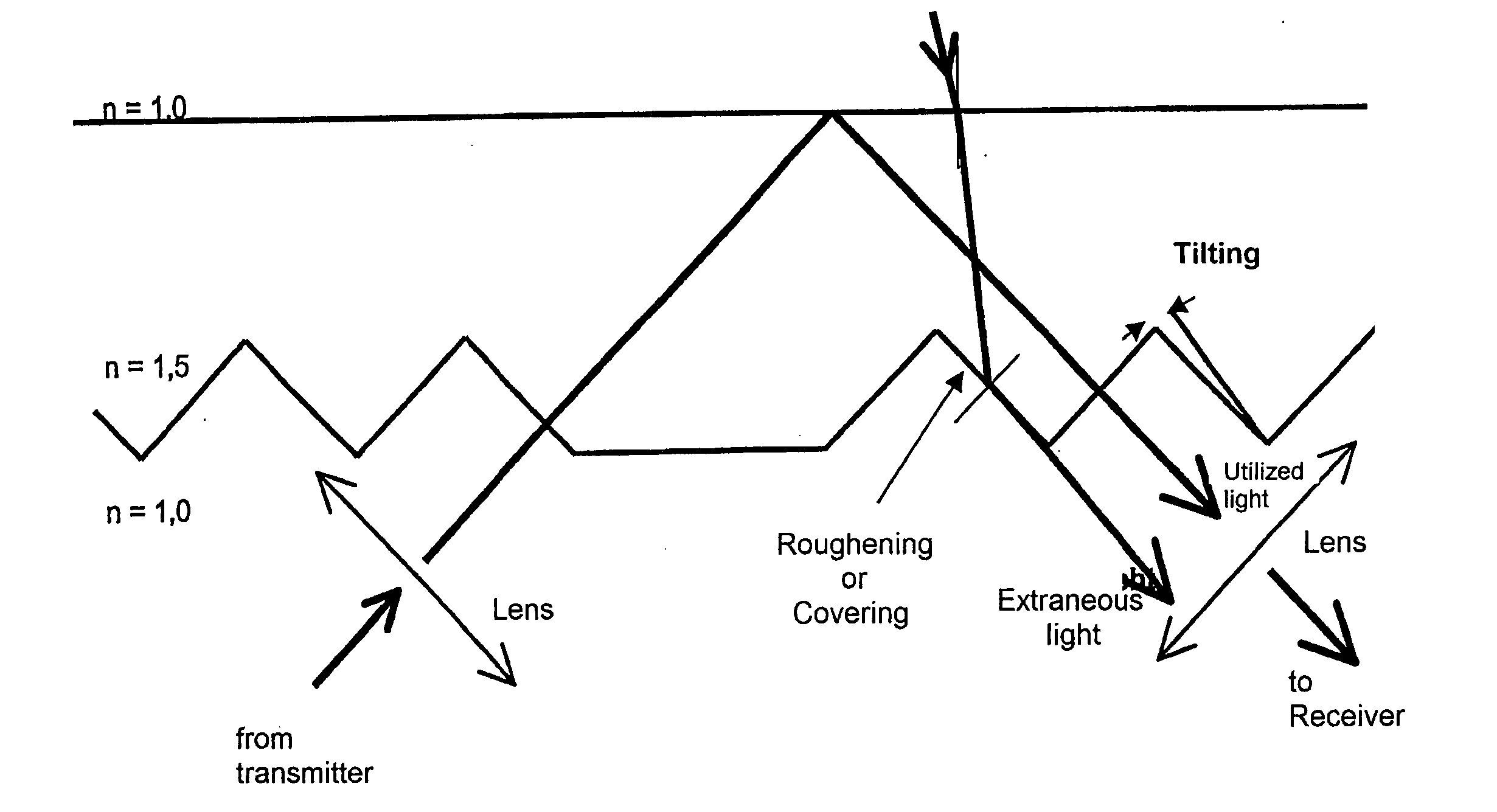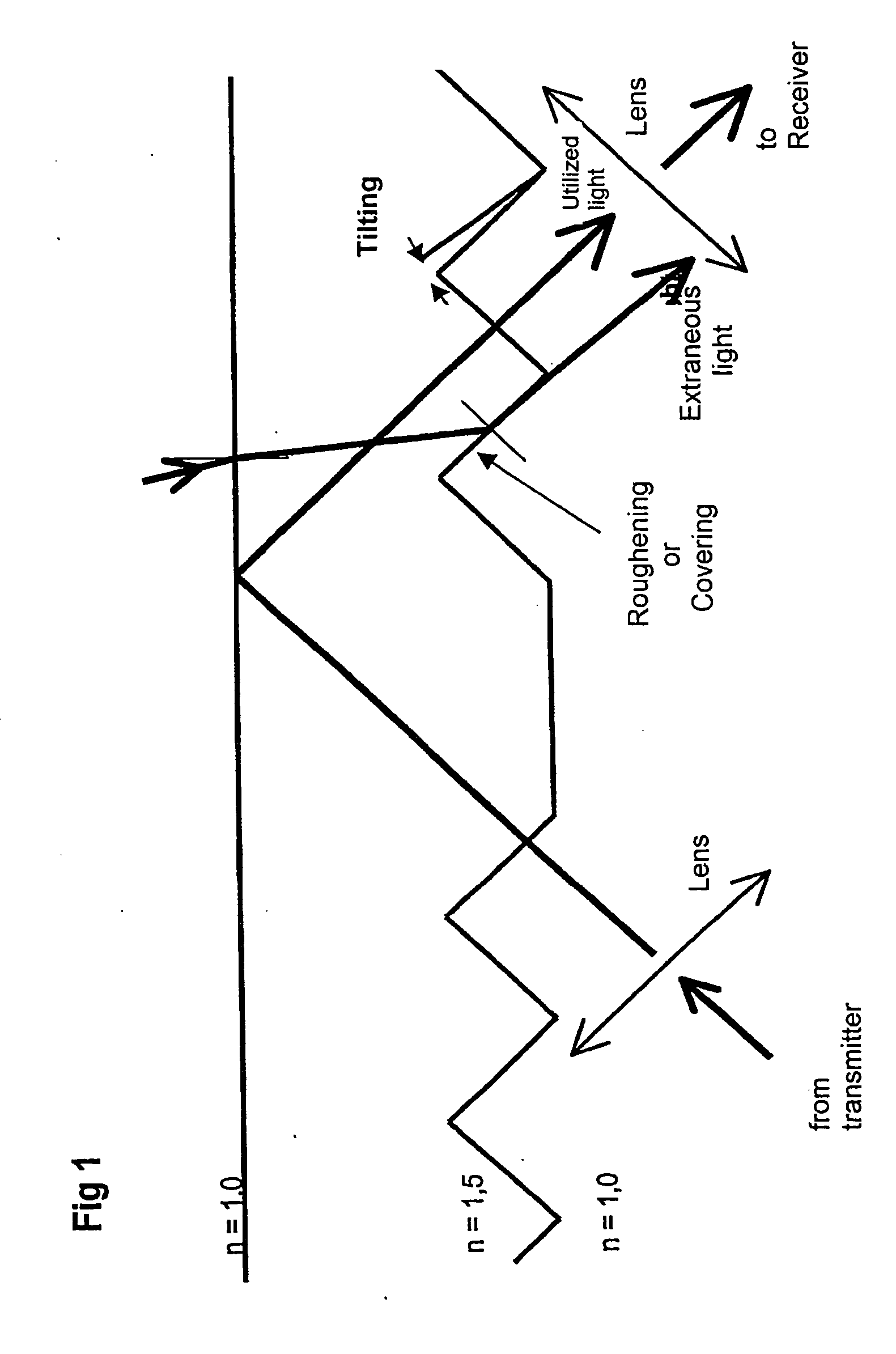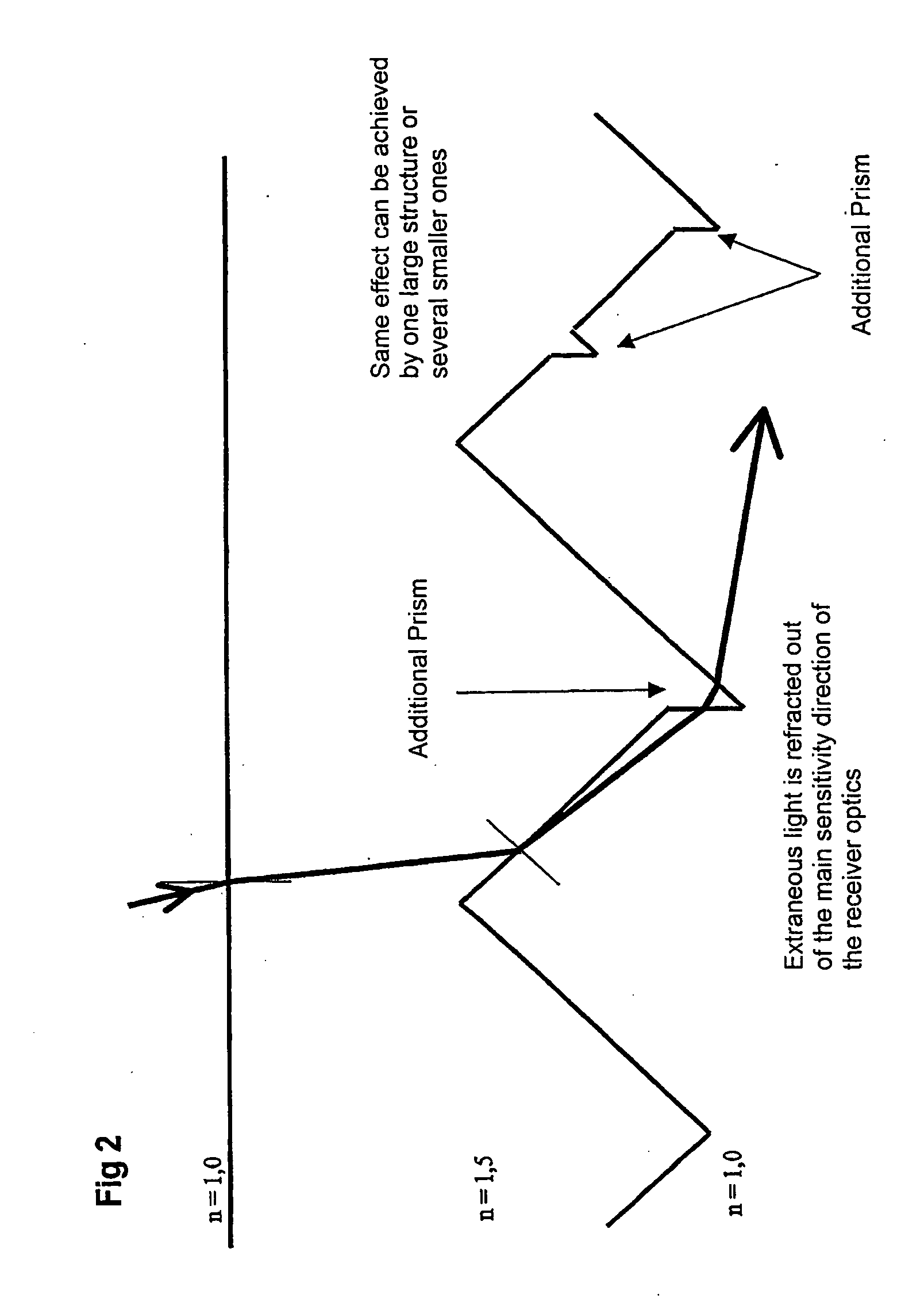Optoelectronic sensor device for a motor vehicle
- Summary
- Abstract
- Description
- Claims
- Application Information
AI Technical Summary
Benefits of technology
Problems solved by technology
Method used
Image
Examples
Embodiment Construction
)
[0022] Referring initially to FIG. 3, an optoelectronic sensor in accordance with the present invention is shown. The sensor senses rain, humidity, moisture, dirt, etc., on a pane 4. Pane 4 may be a window, windshield, glass pane, etc., of a motor vehicle. The sensor generally includes a light transmitter 5, a first lens 2, a coupler 1, a second lens 3, and a light receiver 6. The sensor is located on the interior side of pane 4. For instance, if pane 4 is a motor vehicle windshield, the sensor is located within the interior of the motor vehicle.
[0023] Light transmitter 5 includes a transmitting diode or the like for transmitting optical radiation. For instance, light transmitter 5 transmits optical radiation in the near infrared range at a wavelength of about 880 nm. Light receiver 6 includes a photodiode or the like for detecting optical radiation.
[0024] In operation, light transmitter 5 emits optical radiation towards first lens 2. First lens 2 converts the optical radiation i...
PUM
 Login to View More
Login to View More Abstract
Description
Claims
Application Information
 Login to View More
Login to View More - R&D
- Intellectual Property
- Life Sciences
- Materials
- Tech Scout
- Unparalleled Data Quality
- Higher Quality Content
- 60% Fewer Hallucinations
Browse by: Latest US Patents, China's latest patents, Technical Efficacy Thesaurus, Application Domain, Technology Topic, Popular Technical Reports.
© 2025 PatSnap. All rights reserved.Legal|Privacy policy|Modern Slavery Act Transparency Statement|Sitemap|About US| Contact US: help@patsnap.com



